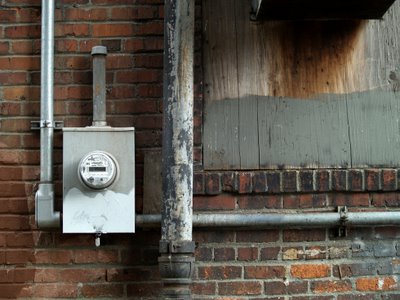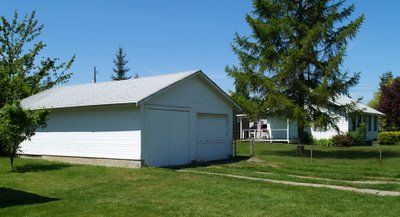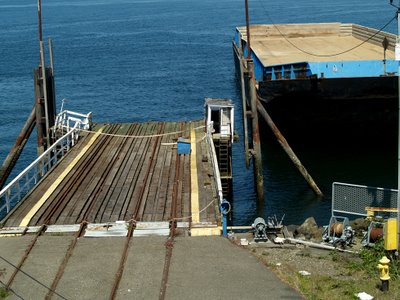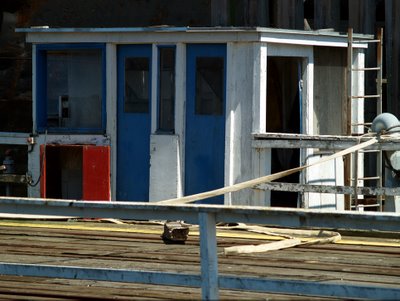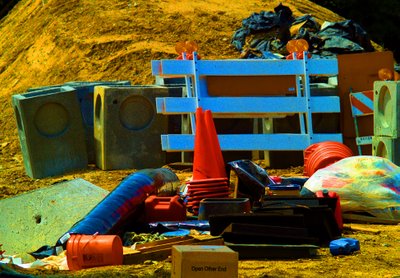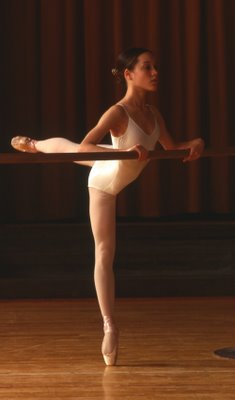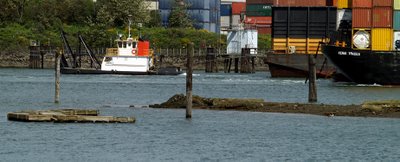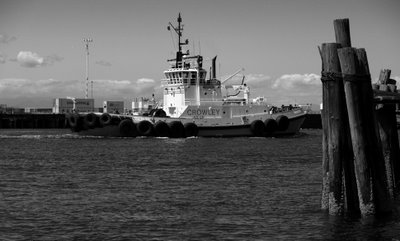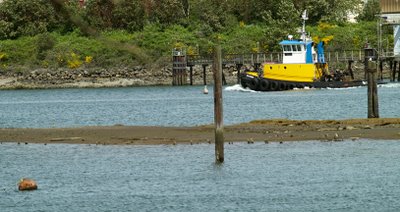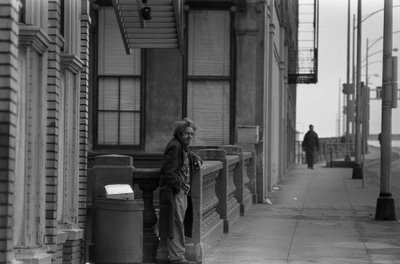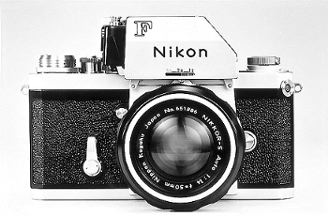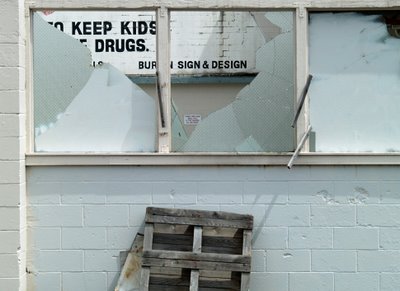
Friday, May 26, 2006
Wednesday, May 24, 2006
Sunday, May 21, 2006
Thursday, May 18, 2006
Wednesday, May 17, 2006
Monday, May 15, 2006
Saturday, May 13, 2006
Ballerina Summer 1978
Wednesday, May 10, 2006
Tied Up on the Duwamish

Tied Up on the Duwamish
Shameless photoshop manipulation on this one. Looks ok at low magnification but the artifacts look pretty bad at 50% or higher. The dramatic sky was in the original image, not imported from somewhere else but I had to created a separate sky layer and use levels to set the black and white reference points as well as moving the middle gray up toward the high end to increase the contrast. This is all standard photoshop stuff for dramatic skies and in my humble opinion the result is a visual cliche.
To get the contrast looking good on main subject I ended up sacrificing the front end of the inside tug boat which was almost black. The resulting image is a little confusing, looks like a tug boat with two cabins. Look at the previous photo Tied Up at the Silos and you will see the front end of the second tug. I "fixed" the problem with another layer for the front end of the inside tug. See below. You will need to click it to enlarge the image to see the difference.

Working with the Olympus E-500, I do not shoot with the preset Olympus "vivid light" turned on, I set it to "normal". I set the ev compensation to -.7 assuming that I am using the TTL metering. I also carry an ancient Gossen Multi-beam which allows me take incident readings. Lately I have been leaving the exposure mode dial set to manual and controlling the bracketing with the exposure dial. This works for subjects that are not moving.
I prefer to shoot slightly soft negatives. This is a hang over from my early B&W work. In high contrast lighting I would shoot Tri-X exposed at 320-400ASA with half stop bracketing and develop in D76 68f 6 1/2 to 7 minutes which produced a slightly soft negative. If there was significant material in zone two then a third stop over (ASA 320) would help preserve it while under development would compress the highlights. The advantage of using Tri-X or Ilford HP4 was the long toe on the density curve. This translated into zone two shadows with detail that you could see if you didn't push your highlights too far up with long development times.
A soft digital negative (Olympus calls it "normal") is just a little bit flat which insures that your highlights will not block up and your zone two shadows will not be lost. A negative like this will nearly always require a levels adjustment but it is far better to do this later than to try and get your digital camera to do it right the first time and risk bringing home an image you cannot fix.
Sunday, May 07, 2006
Saturday, May 06, 2006
Thursday, May 04, 2006
Tuesday, May 02, 2006
Friday, April 28, 2006
Russian Girl - 1971
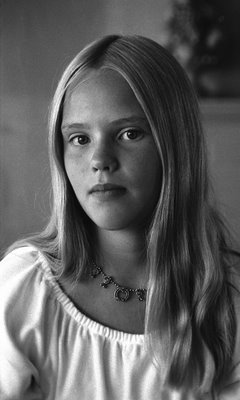
This was taken with window light through thin drapes. No fill light was used. The film was Tri-X.
It is rather amazing the calm expression considering that her mother and father and two sisters and a brother were all in the room while I was shooting. She was going to spend a lot of time in front of cameras, becoming Miss Washington in her late teens and then on to successful modeling career working in Paris, London, and New York.
Thursday, April 27, 2006
Wednesday, April 26, 2006
Burnside Man - 1970



Burnside Man - 1970
West end of Burnside Bridge Portland Oregon. The photos were taken within a few minutes of "Two Pigeons". The man was willing to pose. I don't recall for sure but I think I walked with him to a cafe and paid for his breakfast.
Photos taken with a 200mm lens at f4-f5.6 at shutter speeds like 1/250th. The grain structure shows that the negs were sent to a photofinisher. Tri-X when processed in fresh developer with all baths at 68f had a much tighter grain structure. Tri-X was wonderful film once you learned how to use it.
Two Pigeons - ca. 1970
Tuesday, April 25, 2006
Sunday, April 23, 2006
Homage to Edward Hopper

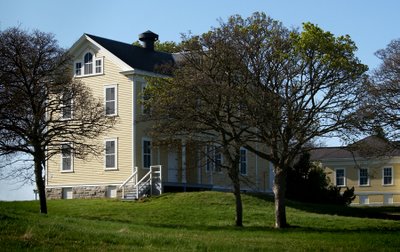
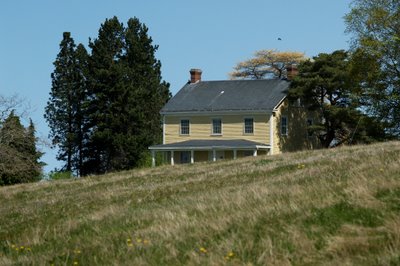

Homage to Edward Hopper - - Fort Lawton April 23, 2006
One sunny afternoon in the winter of '92 I walked into the Ricciardi Gallery on the water front in Astoria Oregon ordered a single latte and while I was waiting for it took a look around at the work currently hanging when my eye was drawn to a large oil on the south wall. The latte woman handed me my coffee and I made my way around the little island in the middle of the room, where Corinne Ricciardi who was preoccupied with paperwork at her desk, to take a closer look at this large oil.
After studying the painting for perhaps thirty seconds I said out loud to no one in particular, "This fellow studied Edward Hopper". Corinne Ricciardi stopped what she was doing and came over. She knew the artist and agreed that he was clearly under the influence of Hopper.
I had several more conversations with Ms. RIcciardi in the months that I spent in Astoria. I didn't care for espresso which was too bitter for my tastes but it was a clean well lighted place, where you could read the NY Times or the NewYorker without paying for it and there were opportunities for conversations with people from out of town, an oasis of "culture" in Astoria.
Thursday, April 20, 2006
Lake Burien Park
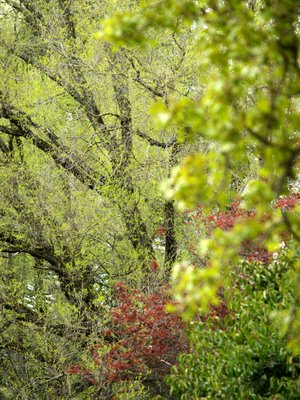
Lake Burien Park isn't on a lake. The lake is several blocks away with no public access which is no big loss since Puget Sound is close by and the lake isn't much of anything more than a glorified pond.
On my way back from my walk I stopped at this little postage stamp park and hauled out the camera. Spotted this tree in a neighboring back yard and wondered how I was going to get it with the light which wasn't bright. The sun was visible through the overcast as a bright area in the middle of the clouds giving a very soft but directional source which is great for portraits of young women but a little flat for other subjects like trees.
Tried to violate some of the laws of physics on this one. 300mm shot hand held at 1/200th with the lens wide open at f4.5. The result was softness over all but the extremely out of focus foreground gives an illusion of sharpness to the subject.
Subscribe to:
Posts (Atom)



